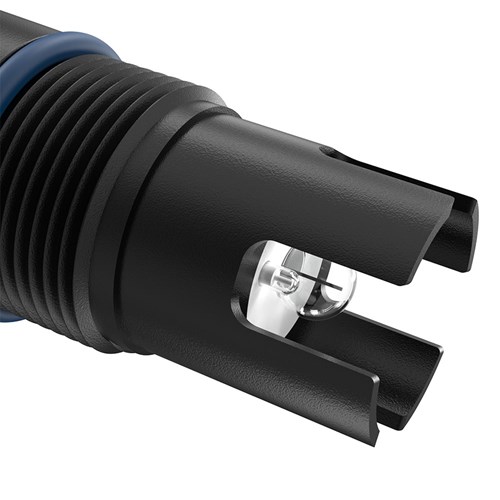pH sensor
WPH2007
Features
- Industrial wastewater engineering
- Process measurements, electroplating plants, paper industry, drinks industry
- Wastewater containing oil
- Suspensions, varnishes, media containing solid particles
- Two-chamber system for when electrode poisons are present
- Media containing fluorides (hydrofluoric acid) up to 1000 mg/l HF
The WPH2007 glass pH sensor is frequently used in the downstream engineering of biotechnology as well as the mining and smelting, papermaking, paper pulp, textile, petrochemical, and semiconductor electronic industries.The reference electrode and the glass or metal electrode are united in one shaft because they are intended to function as combined electrodes. Depending on the kind, a temperature probe may also be integrated.
01
Industrial pH Monitoring: pH and pH Sensor Basics
The WPH2007 sensor has large sensitive areas and strong mechanical shock resistance, which can be widely used in various chemical processes including microbial technology, pharmaceuticals, food and beverages, sugar manufacturing, chlor-alkali, mining and smelting, paper-making, paper pulp, textiles, petrochemical industry and semiconductor electronic industry as well as fields such as waste water treatment The principle of pH/ORP sensor measurement is electrochemical method and galvanic battery principle. The primary battery is a system whose function is to turn chemical energy into electrical energy. The voltage of this battery is called electromotive force (EMF) which is made up of 2half-cells, of which one is called a measuring cell whose potential is related to specific ionic activity; the other is a reference half-cell, commonly known as a reference sensor, which is generally interlinked with the measuring solution and is connected to the measuring instrument.

02
Application of pH Sensor
Industrial wastewater engineering. Process measurements, electroplating plants, paper industry, drinks industry. Wastewater containing oil. Suspensions, varnishes, media containing solid particles. Two-chamber system for when electrode poisons are present. Media containing fluorides (hydrofluoric acid) up to 1000 mg/l HF. Isolated power supply design, data stability, strong anti-interference ability

03
Uses of pH Sensor
Adopt a big area PTFE liquid junction with easy maintenance and an advanced solid dielectric from across the world. Long-range reference diffusion route significantly increases electrode life in challenging conditions. Because the electrode is constructed from high-quality low-noise wire, the signal output may be produced for up to 40 meters without interference. It also has excellent precision, quick reaction times.
pH Calibration
Enter the PH calibration screen, the first PH electrode intothe4.00PH standard solution, standing for a moment, to be stable after the show, press the ENT, then the PH electrode into the 6.86PH standard solution Set the PH electrode into the 9.18PH standard solution, put it aside for a moment, after the test is stable, press ENT, the display shows the success of the calibration, the whole process of PH calibration complete
Technical Specification
Product
Glass pH sensor
Model
WPH2007
Temperature Range
0-130 Deg.Cel.
Zero potential point
7 ± 0.5 pH
Slope
(PTS values) ≧95% (25℃)
Membrane resistance
<250ΜΩ
Practical response time
< 1 min
Temperature
0~80℃
Pressure range
0.4MPa
Temperature compensation
PT1000
Cable Length
10 meter
Resistance
≦ 250 mΩ
Sensors

Features
Compact structure and easy installation
Isolated power supply design, data
stability, strong anti-interference ability
automatic/manual temperature
compensation
Automatically detect whether the
temperature probe is disconnected or
faulty, then switch to manual
temperature compensation
Support USA/NIST/custom pH calibration
solution, and user-defined ORP standard
solution
Communication: RS485 interface*1
(Modbus RTU protocol)
The principleof pH/ORPsensor measurement is electrochemical method and galvanic battery principle. The primary battery is a system whose function is to turn chemical energy into electrical energy. The voltage of this battery is called electromotive force (EMF) which ismade up of 2half-cells, of which one is called ameasuring cell whose potential is related to specific ionic activity; the other is a reference half-cell, commonly known as a reference sensor, which is generally interlinked with the measuring solution and is connected to the measuring instrument.The potential difference produced by the galvanic interaction inside the sensor is transmitted to the pH controller, and the corresponding algorithm is transmitted to display the pH value. WKP100 is a digital sensor with RS485 designed by our company for the aquiculture industry, which can be used to measure the change of pH/ORP value in an aqueous solution system within the range. The sensor with a standard RS485 MODBUS-RTU protocol interface, which can be connected with the host computer conducts remote communication Each sensor is manufactured with our patented Axial Ion Path® reference technology, proprietary Low-Noise & High Temp Signal Cable along with proprietary ruggedized, high temp and coat resistant glass formulations.
Applications
Accessories
Documents

Wellkonix global commitment to the Chemical Industry
Wellkonix is the world leader in automation solutions to the chemical industry. As a global player, we have strong local support in any region that you run your business
Solutions
automation
Project execution
Providing solutions of every kind, at all times in chemical industries
WellKonix engineers were all very affected person and cooperative during the early engineering and start-up phases. We labored as one team thru to the completion of this plant project





